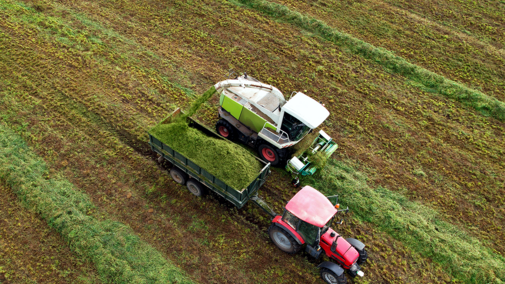Pre-season Hay Equipment Maintenance
Spring is busy getting crops in the ground, but if much needed moisture keeps you from the field, take some time to maintain your haying equipment and prevent costly downtime later.
First, inspect, lubricate and service all power-driven areas such as belts, bearings, chains, and gears. Set tension on belts and chains. For sicklebar headers, check, sharpen or replace cutterbar sections and adjust wear plates, hold-down clips and guards. Make sure your cutterbar has proper knife register. On disc mowers, replace knives and rotate or replace worn turtles over the knives.
Conditioning rollers often are overlooked. Look for uneven wear and adjust the roll gap, roll timing and roll pressure for your crop.
On round balers, inspect belts, chains, and slats or rollers frequently for wear. Trim frayed edges and repair belts as needed to maintain uniform tension. When not in use, keep belts clean and release belt tension.
Check plunger knife clearance and plunger alignment on square balers and inspect the tying mechanism and adjust as needed. Pick-up teeth on balers and on rakes frequently are broken or bent. Replace defective teeth and adjust height if necessary.
Also, be sure you have replacement parts on hand for frequently broken or replaced items. And most important of all, review your owner's manual to identify recommended maintenance procedures and proper settings.
First Cutting Alfalfa
First cutting alfalfa harvest usually begins when accumulated growing degree days reach between 700 to 750 GDDs. For central Nebraska, our Useful to Useable (U2U) crop development model predicts that alfalfa fields will peg harvest stages between May 27 to May 30. So, prepare now for first cutting harvest. Moving forward, if the first cutting is delayed after 1/10th bloom or later, then potential alfalfa regrowth will be removed with the first cutting, thus delaying the next hay crop. This cutting timing strategy provides a compromise between maximizing forage production versus retaining nutritional quality declining as alfalfa stems mature.
In fields where irrigation has not been an option, soils that lack moisture will likely result in disappointing first cutting forage yields. In addition to drought, insect damage may have caused premature leaf loss, thus requiring early cutting before alfalfa crown regrowth or 1/10th bloom to salvage what remains.
For most parts of the state, recent rainfall and warm weather may have stimulated rapid alfalfa growth — this means those needing dairy quality forage may need to cut hay soon. First cutting alfalfa hay quality declines quicker compared to the second, third or fourth cuttings.
For those wanting to maximize quantity and replenish hay reserves, delaying harvest just a little longer until almost full bloom will likely result in higher yields. Alfalfa will be more efficient using available soil moisture if cutting is delayed until bloom but likely reduce total season cuttings. If your operation needs more roughage tonnage, delaying cutting for higher yield and lower quality is better. However, if higher protein content is needed, then earlier cutting will produce a higher quality hay. Remember, though, that continually cutting alfalfa at the early pre-bud stage will weaken plants and potentially increase weedy conditions.
Small Grain Forage Harvest
As we work our way through spring, many small grains are maturing fast and nearing harvest windows. Are you ready to make the most out of these forage options?
Producers seeking hay should consider the animal being fed and feeding method before harvesting.
For young, growing cattle, small grain hay should be cut in the boot stage or as soon as possible following heading to ensure higher protein and energy content. Mature cow and feedlot managers may consider delaying their forage harvest until the hard dough development stage to increase forage quantity, since these cattle can utilize lower quality forage than younger beef animals.
Small grains with awns like rye, triticale and wheat can be a concern at later maturities. Grinding the hay, feeding in ration with additional moisture, or using an awnless (beardless) variety can reduce this risk.
No matter how you harvest, delaying can mean higher productivity. Nebraska studies have shown an eight-ton per acre increase between harvest at boot stage and soft dough on irrigated fields.
The tradeoff for delaying forage harvest was an 8% drop in crude protein content.
Another concern for silage harvesters is proper moisture when packing. A statewide study looking at 17 Nebraska producers found the biggest loss of small grain silage quality was packing too wet, despite almost all producers having wilted the crop before packing. Silage packed too wet had almost three times the energy loss than those packed at proper moisture content.
Shoot for 70-72% moisture for proper packing. Study survey data showed producers who harvested at boot, heading or pollination stage and wilted for 16-24 hours appeared more likely to achieve target moisture levels.

